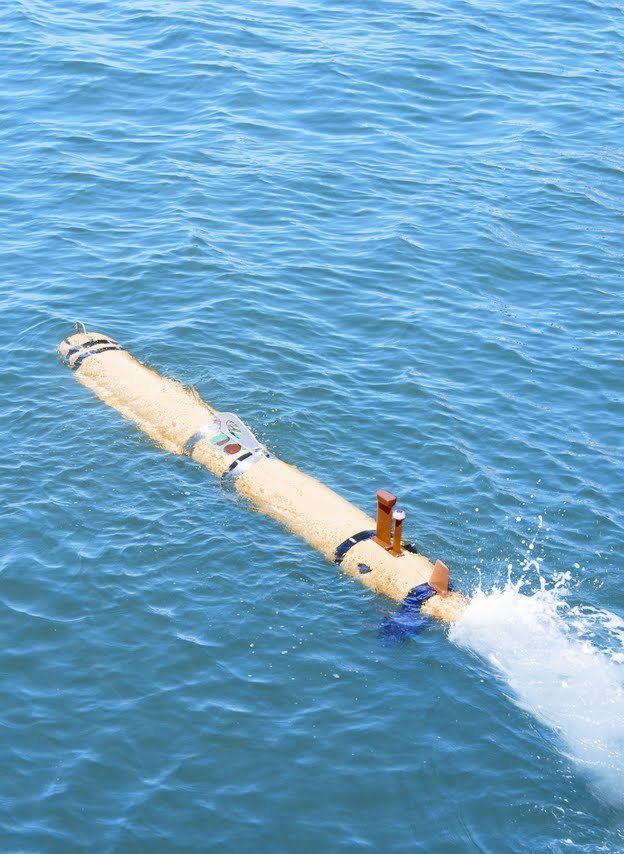AUV’s 101

(Click to enlarge) A look at Hydroid’s Remus 600 Autonomous Underwater Vehicle (AUV). Hydroid was selected to provide AUVs to support the Pioneer Array component of the Ocean Observatories Initiative. (Photo provided by Hydroid, Inc.)
By Leslie M. Smith, PhD. Science Communicator, Ocean Observatories Initiative
Since the time of Homer and Aristotle, humans have been fascinated by the possibility of autonomous, self-thinking robots. Starting in the 1960’s digitally controlled robots using artificial intelligence were employed in an industrial setting, allowing for the production of goods without the need for human assistance. Robots flood our imagination and are of great use as they can access the inaccessible, resist hostile environments, and carry out jobs with a strength and speed that is unfeasible for the human body. Like R2-D2, Johnny-5 and Wall-E, Autonomous Underwater Vehicles (AUVs) are untethered, unmanned, computer-controlled robots. But, unlike these fictional robots, AUVs are real and a key component of oceanographic research. AUVs have revolutionized oceanography allowing for comprehensive, high quality data from depths and locations previously unattainable.
The first AUV, the Self Propelled Underwater Research Vehicle (SPURV), was developed by the University of Washington Applied Physics Laboratory and put into operation in 1967. It was not until the late 1990’s, however, that increased innovations in AUVs allowed for their more widespread use in the ocean sciences.
AUVs are self-propelled vehicles using mechanisms such as propellers and thrusters to move themselves through the water column. They are able to house multiple sensors and travel for long distances, communicating with and accepting instructions from operators on shore. These vehicles have been used for many purposes within the oceanographic community including high resolution mapping of the seafloor, observing throughout the water column and operating in oceans covered with ice where sampling from vessels is greatly restricted.
As part of the OOI network, these instruments will provide 3-D coverage within an array of moorings, called the Pioneer Array, along the continental shelf break off the coast of New England. The Pioneer Array is part of the Coastal Global Scale Nodes (CGSN) component of the OOI. AUVs will measure various water column parameters such as temperature, salinity, and oxygen as well as estimate phytoplankton (microscopic aquatic plant) biomass. Unique to AUVs is the ability to house very complicated instrumentation, such as wet chemistry nutrient analyzers looking at nitrogen and phosphorus throughout the water column. Nutrients are a key component of surveying the dynamic mixing environment around the Pioneer Array and its ecosystem health. AUVs will be deployed at the shelfbreak front, an area of high mixing that brings nutrients from depths up to the surface. Just as adding fertilizer (i.e., nutrients) to your lawn stimulates plant growth, the addition of nutrients to a marine environment transported from deeper depths, stimulates phytoplankton growth. This high quantity of phytoplankton biomass is key to the highly productive ecosystems and fisheries of that region.
June 2011 marked the award of the contract to Hydroid, of Pocasset, MA. for the design, testing, and production of these AUVs. For more information please see the Contract News Release.
